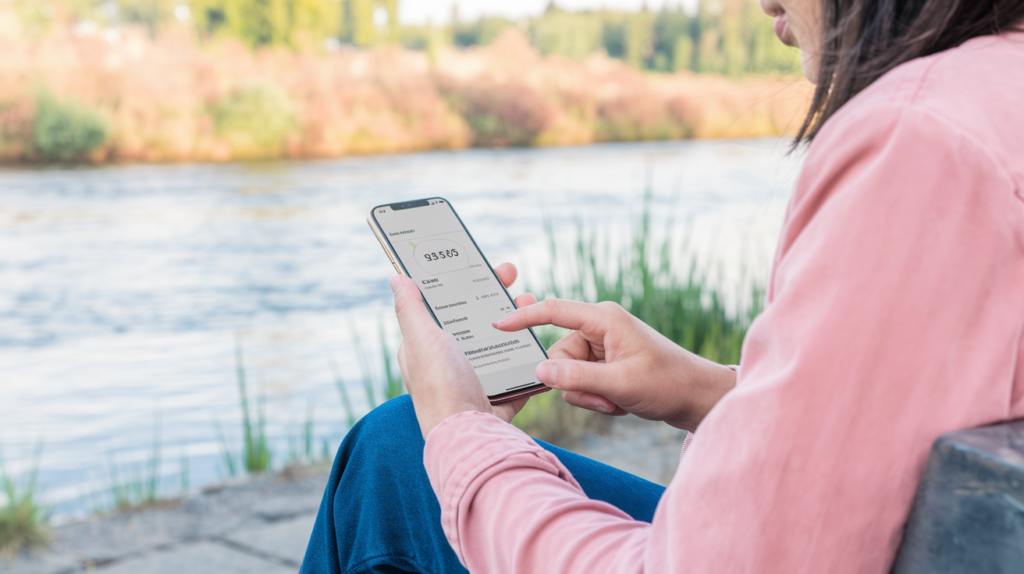Save More Today
Managing money in today’s world can be tough. But, with the right approach, you can save more. This guide will show you how to save money every day. You’ll learn about budgeting and making lifestyle changes that help your wallet.

Key Takeaways
- Develop a personalized budget to track your income and expenses
- Set realistic financial goals to stay motivated and on track
- Discover grocery shopping strategies that reduce costs without compromising quality
- Implement energy-saving habits to lower your monthly utility bills
- Explore alternative transportation options and fuel-efficient driving techniques
- Create an emergency fund to prepare for unexpected financial challenges
- Leverage digital tools and apps to improve your money management
Some blog articles may contain affiliate links to products or services for which we may receive a commission on transactions. Some of the content on this blog site may be assisted by A.I. generators.
Thank you for visiting our blog!

Money-saving ideas within this article:
- Develop a personalized budget to track your income and expenses.
- Set realistic financial goals to stay motivated and on track.
- Discover grocery shopping strategies that reduce costs without compromising quality.
- Implement energy-saving habits to lower your monthly utility bills.
- Explore alternative transportation options and fuel-efficient driving techniques.
- Create an emergency fund to prepare for unexpected financial challenges.
- Leverage digital tools and apps to improve your money management.
- Track daily expenses effectively.
- Make your lunch instead of buying it.
- Save energy by turning off lights and electronics and using energy-saving appliances.
- Choose generic or store-brand items instead of name brands.
- Use money-saving programs and cash-back apps.
- Meal planning.
- Maximize grocery store rewards programs.
- Benefit from bulk buying.
- Change your thermostat settings appropriately for the season.
- Unplug unused devices.
- Switch to LED bulbs.
- Wash clothes in cold water.
- Seal air leaks in your home.
- Use public transportation.
- Implement carpooling.
- Cycle or walk instead of driving.
- Maintain proper tire pressure.
- Avoid excessive idling of vehicles.
- Combine errands to reduce trips.
- Maintain vehicles regularly.
- Use the local library for free entertainment resources.
- Attend free community events.
- Follow local social media for deals and giveaways.
- Start small with micro-saving techniques.
- Automate savings.
- Set and reach emergency fund milestones.
- Use budgeting apps.
- Use expense-tracking apps.
- Automate savings through apps like Acorns.
- Adopt minimalist living approaches.
- Make sustainable choices like energy-efficient appliances and eco-friendly transportation.
- Break expensive habits such as dining out.
- Reassess unnecessary subscription services and memberships.
Understanding the Basics of Financial Planning and Budgeting

Managing your money can seem hard, but it’s doable. Start with the basics: make a monthly budget and set financial goals. This way, you can track your spending and control your money future.
Creating Your First Monthly Budget
Making a monthly budget is key for busy people. List your must-haves like rent, utilities, and food. Then, plan for fun money like entertainment and dining out. Remember to include any extra or bi-weekly pay, as it affects your money flow.
Setting Realistic Financial Goals
After your budget, set financial goals you can reach. Goals might be saving for a house, paying off debt, or building an emergency fund. Break big goals into smaller steps and check your progress often. This keeps you motivated and on track.
Tracking Daily Expenses Effectively
Watching your daily spending is vital for budgeting. Choose a method you like, like paper or apps, and use it. Sort your expenses and check them often. This helps you find ways to save and spend better.
Learning these basic money skills will help you reach your financial goals. You can do it, even with a busy schedule or bi-weekly pay.
Smart Money-Saving Tips for Everyday Life
In today’s fast world, saving money is key, more so for those with low-income budgets. There are many ways to cut costs and save more without giving up your lifestyle.
First, look at how you spend your money every day. Track your spending to see where you can save. This helps you find ways to spend less and save more for your goals.
- Try making your lunch instead of buying it. This can save a lot over time.
- Save energy by turning off lights and electronics. Look for energy-saving home appliances too.
- Choose generic or store-brand items instead of name brands. They’re often cheaper but just as good.
Also, use money-saving programs and discounts. Look for local and national rewards or cash-back apps. They can give you money back on your daily buys.
| Savings Opportunity | Estimated Monthly Savings |
|---|---|
| Packing Lunch | $150 – $250 |
| Reducing Energy Consumption | $50 – $100 |
| Opting for Generic Brands | $30 – $80 |
| Utilizing Rewards Programs | $20 – $50 |
By using these smart money-saving tips, you can improve your financial flexibility. You’ll have more money for your future goals or an emergency fund.
“The key to financial freedom is to spend less than you earn, and be willing to work hard for the things you want in life.” – Dave Ramsey
Remember, small changes can make a big difference in your finances. Try these smart strategies for low-income budgets and start saving now!

Grocery Shopping Strategies That Cut Costs Without Sacrificing Quality
We all want to save money on groceries without losing quality. Luckily, there are ways to do this. Let’s look at some top grocery budgeting hacks for all shoppers.
Meal Planning for Budget Success
Meal planning is a big money-saver. It helps you make a list of just what you need. This cuts down on waste and saves you money. Plus, you get to enjoy healthy, tasty meals.

Maximizing Grocery Store Rewards Programs
Many stores have rewards programs that give discounts to loyal shoppers. By joining these, you can save a lot. You get special coupons and points for your purchases. It’s a great way to save on your grocery budgeting.
Bulk Buying Benefits and Best Practices
Buying in bulk can really help your budget. It’s cheaper for non-perishable items. But, make sure you have enough space and will use it before it spoils. Smart bulk buying is a key grocery budgeting strategy.

“Meal planning and bulk buying have been lifesavers for my grocery budget. I’m able to save so much money without compromising on the quality of the food my family eats.”
– Sarah, Busy Mom
Energy-Saving Habits That Reduce Monthly Bills

Looking for ways to save money? One key area is to use less energy. Simple habits can cut down your bills and help you reach other financial goals.
Changing your thermostat is a big help. In summer, turn it up a bit. In winter, turn it down. This small change can save a lot of energy without making you uncomfortable.
- Unplug unused devices to stop energy waste.
- Switch to LED bulbs for less energy use.
- Wash clothes in cold water to save energy.
- Seal air leaks to keep in the heat or cool air.
These changes can greatly lower your energy bills. They also help the planet. Every little bit helps, and the benefits are huge.
Smart Transportation Choices for Maximum Savings

Single-income families can save a lot by choosing smart transportation. They can try different ways to get to work or school. This includes using public transport, driving more efficiently, and keeping their cars in good shape.
Alternative Transportation Methods
Public transport like buses and trains is cheaper than driving. It saves money on gas, insurance, and car upkeep. Carpooling or biking can also cut down on costs.
Fuel Efficiency Tips
- Maintain proper tire pressure to improve fuel economy.
- Avoid excessive idling, which burns fuel without moving the vehicle.
- Combine errands to reduce the number of trips and overall mileage.
- Consider a more fuel-efficient vehicle when it’s time to replace your current car.
Vehicle Maintenance for Long-term Savings
Regular car maintenance is key. It keeps your car running longer and saves money on repairs. Also, a clean car holds its value better.
| Transportation Method | Average Monthly Savings |
|---|---|
| Public Transportation | $150 – $300 |
| Carpooling | $75 – $150 |
| Cycling | $100 – $200 |
Choosing smart transport options helps single-income families save money. They can use this saved money for other important things at home.

Creative Ways to Save on Entertainment and Leisure
In today’s fast world, it’s easy to spend a lot on fun. But, with some creativity, you can have fun without spending a lot. Let’s look at some new ways to creative ideas to make saving fun & visual for entertainment and leisure.
Embrace the Power of the Library

The local library is full of creative ideas to make saving fun & visual. You can borrow books, movies, and audiobooks for free. Plus, there are free community events to enjoy.
Check out the library’s digital stuff like e-books and streaming services. This way, you can enjoy your favorite things anywhere.
Explore Free Community Events
Many places have creative ideas to make saving fun & visual-free events. Look for outdoor concerts, festivals, museum days, and art exhibits. Keep an eye on local event calendars and sign up for newsletters to find out about these fun events.
- Attend free outdoor concerts or movie screenings in the park
- Visit local museums on their designated free admission days
- Participate in community-organized scavenger hunts or outdoor activities
Tap into the Power of Social Media
Social media is great for creative ideas to make saving fun & visual in entertainment and leisure. Follow local businesses, influencers, and groups. They often share special deals, giveaways, and insider tips.
“Creativity is the key to unlocking a world of creative ideas to make saving fun & visual when it comes to entertainment and leisure. With a little imagination, you can enjoy the activities you love without breaking the bank.”
By using these creative ideas to make saving fun & visual, you can enjoy life without spending too much. Find a way to live a balanced and fulfilling life that fits your budget.

Building an Emergency Fund with Limited Resources
Saving for a rainy day can seem hard, even when you don’t have much. But, small steps can lead to a big emergency fund. We’ll look at ways to save, like using envelopes and jars, to build your financial safety.
Starting Small: The Power of Micro-Saving
Starting to save is all about small amounts. Saving $5 or $50 a week can really add up. The goal is to make saving a regular habit, no matter how little you start with.
Automated Saving Strategies
Automating your savings helps you stay consistent and avoid spending. Set up automatic transfers to a savings account. Or use envelopes and jars for different savings goals. This way, you save without even thinking about it.

Emergency Fund Milestones
- Start with a $1,000 emergency fund for quick needs.
- Then aim for 3-6 months’ worth of living expenses.
- Celebrate each goal reached, as it shows you’re getting closer to financial security.
Building an emergency fund is a long-term effort, not a quick fix. By using saving techniques like envelopes and jars, you can build a safety net. This gives you peace of mind and stability, even when unexpected things happen.

Digital Tools and Apps for Better Money Management
In today’s world, managing money is easier than ever. We have many apps and online tools to help. These tools are great for people with one income, helping them make the most of their money.
Budgeting Apps for Effortless Monitoring
Apps like Mint, YNAB, and Personal Capital are very helpful. They let you track your spending and set financial goals. They also update your balance and let you customize your budget.
Expense Tracking for Informed Decisions
Apps like Expensify and Fudget show where your money goes. They help you log purchases and find ways to save. This way, you can make smart choices with your money.
Automating Savings for Effortless Growth
Apps like Acorns and Qapital make saving easy. They round up your purchases and save the extra. This is great for growing your savings without much work.
| App | Key Features | Ideal for One-Income Budgets |
|---|---|---|
| Mint | Budgeting, expense tracking, credit monitoring | Comprehensive personal finance management |
| YNAB | Zero-based budgeting, goal setting, reporting | Disciplined approach to one-income budgeting |
| Acorns | Micro-investing, automated savings, portfolio building | Effortless wealth-building for one-income households |
Using these digital tools, people with one income can better manage their money. They can make smart choices and grow their savings. This helps them deal with the challenges of a one-income budget.

Lifestyle Changes That Lead to Significant Savings
Getting financially stable often means looking at our daily habits. By making smart lifestyle tweaks to maximize savings, we can save a lot. This section talks about three ways to use smart financial strategies through lifestyle changes.
Minimalist Living Approaches
Minimalism is more than a trend; it’s a way to save a lot. By cleaning up your space and buying less, you save money. This helps you reach your financial goals faster.
Living simply can lower your housing costs and utility bills. It also means buying less, which saves money. This leads to a better financial future.
Sustainable Choices That Save Money
- Invest in energy-efficient appliances and home improvements: The upfront cost may be higher, but the long-term savings on utility bills can be significant.
- Opt for eco-friendly transportation: Bicycling, walking, or using public transit can reduce fuel expenses and maintenance costs for your vehicle.
- Choose sustainable fashion and household items: While the initial investment may be higher, these products often last longer, reducing the need for frequent replacements.
Breaking Expensive Habits

- Reduce dining out and cooking more at home: Preparing meals yourself can save hundreds of dollars each month compared to eating out regularly.
- Limit impulse purchases and stick to a shopping list: Take the time to evaluate the necessity and value of each item before making a purchase.
- Reassess subscription services and memberships: Identify and cancel any unnecessary monthly or annual fees that are draining your budget.
By making these lifestyle tweaks to maximize savings, we can save a lot over time. The trick is to find small changes in our lives that lead to big smart financial strategies.
Common Money-Saving Mistakes to Avoid
Managing money can be tough, but knowing common mistakes helps. Avoiding these can save you money and keep you financially stable. One big mistake is not making a budget that covers all your costs. This can lead to spending too much and running out of money.
Not saving for emergencies is another big mistake. It leaves you open to big expenses like medical bills or car repairs. Also, buying things on impulse can hurt your savings. And, not looking for ways to save on things like bills or groceries can slow down your progress.
To avoid these mistakes, make a detailed budget, set up automatic savings, and spend wisely. Being careful and using smart strategies can help you reach your financial goals. Even with a small budget, you can build a secure future.
FAQ

What are some smart financial strategies for everyday life?
Smart money moves include making a budget and setting goals. Track your spending too. Save on energy, transportation, and fun activities.
How can I develop daily money-saving habits for financial flexibility?
Start with meal planning and using grocery rewards. Buy in bulk and save a little each day. An emergency fund helps too.
What are some grocery budgeting hacks for all shoppers?
Plan meals and use store rewards. Buy in bulk wisely. These tips help everyone save without losing quality.
What are some money-saving tips for single-income families?
Try new ways to get around and save on gas. Keep your car in good shape. Choose affordable fun activities.
What are the most efficient budgeting tips for busy people, including those on bi-weekly pay schedules?
Make a budget and set goals. Use digital tools to manage money. For bi-weekly pay, save automatically and use envelope budgeting.
How can envelope and jar saving techniques benefit goal-oriented savers?
Use envelopes or jars for different savings goals. It’s a visual way to stay focused and motivated.
What are some creative ideas to make saving fun and visual?
Create charts or boards for tracking. Use jars or envelopes for cash goals. Add fun elements to your savings plan.
What lifestyle tweaks can help maximize savings?
Live simply and choose eco-friendly, cost-effective options. Break bad spending habits. These changes save money and improve your finances.
What are some smart strategies for low-income budgets?
Use small savings methods and automate savings. Build an emergency fund, even with less money. Avoid common mistakes and make smart choices.
What are some effective strategies for one-income budgets?
Use digital tools for better money management. Try new transportation and save on bills. These steps help stretch your budget.





Some blog articles may contain affiliate links to products or services for which we may receive a commission on transactions. Some of the content on this blog site may be assisted by A.I. generators.
Thank you for visiting our blog!

Join the discussion One Comment